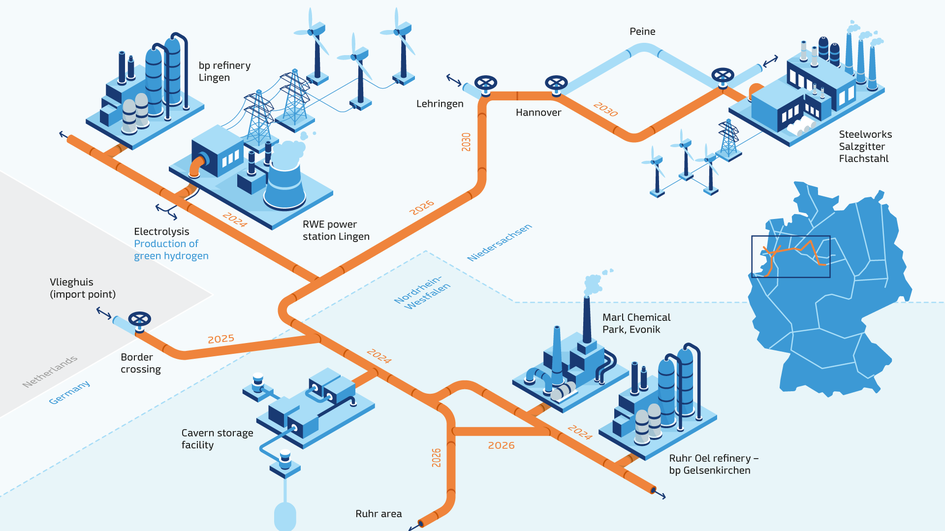
Evonik in green hydrogen alliance
Submitted by:
Andrew Warmington
Evonik is among the seven companies with operations in Germany that have launched the GET H2 alliance, which says that it “aims to create the basis of a European infrastructure for green hydrogen” by 2024. The others are BP, Nowega, OGE, RWE, Salzgitter Flachstahl and Thyssengas.
GET H2 plans build a cross-border infrastructure for hydrogen from production to transport, storage and industrial use. This will all be connected in multiple steps, starting with supplying the green hydrogen produced by elecrolysis at RWE’s Lingen plant via the existing grid to BP’s refinery at Gelsenkirchen.
In 2025, the network will be extended to the Dutch border, laying the foundation for a trans-European hydrogen market. RWE will integrate a cavern storage facility in Gronau-Epe in 2026. By 2030, the network is to be extended to the Salzgitter steelworks and, if necessary, connected to other networks, including Evonik’s chemical park at Marl. This is all projected to save CO2 emissions of up to 16 million tonnes in that timeframe.
The consortium has submitted an expression of interest to the German Federal Ministry of Economics & Technology for funding under the Important Projects of Common European Interest (IPCEI) programme. However, they warned that, although IPECI can part-finance network construction, further amendment to the Energy Industry Act is necessary.
The Germany cabinet passed a draft of this in early February. However, GET H2 said, it “does not provide for an overarching regulation of gas and hydrogen networks with a uniform gas and hydrogen network fee”. This, in their view, “would be the best solution to enable a uniform and non-discriminatory use of the hydrogen infrastructure at sustainable conditions”.
In the same field, Italian engineering firm Saipem and Alboran Hydrogen have signed a memorandum of understanding to jointly develop and build five plants to produce green hydrogen production via electrolysis in the Mediterranean basin. Three will be in southern Italy, in the regions of Brindisi, Taranto and Foggia; the others in Albania and Morocco, with the Moroccan plant producing ammonia from green hydrogen.
Saipem will take charge of engineering, procurement and construction, while Alboran, which is active development of renewable projects, will coordinate the technological aspects with the Italian research institutes that are also involved: National Energy Technology District, La Sapienza University, Salento University and the Brindisi Research Centre.
